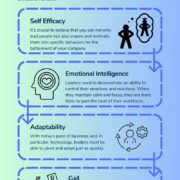Develop A Golden Image Standard For Remote Workers
As the Coronavirus disease (COVID-19) shuts down much of the world’s regular operations, more companies than ever are suddenly managing a remote workforce. I founded a virtual organization in 1998 and have since been managing a remote workforce around the world. Forrester Research studied our processes and named us a “Golden Image Standard” for other companies to follow, so I thought I would share some insights on how to best manage this new reality.
Tech Priorities – Remote work is first and foremost about good tech. It’s not as simple as assigning employees a laptop and sending them on their merry way. Forrester applauded our remote support technologies, robust storage capabilities, collaboration tools, and proactive approach to green IT, calling our remote workers more productive and greener when compared with their previous office-based environments. We’re proud of that but truth be told, smart IT is even easier these days. Companies like Zoom, Skype, and Google make it easy to teleconference and hold meetings (although, as you always should, consider which meetings are truly vital). Slack is a great way to keep communications constant and within different working groups. Microsoft Sharepoint and Google make it easy to share, store, and manage versions of documents. And most everyone now has a mobile phone, which allows them to work within and manage these applications from anywhere. Also, think of equipment in an employee’s office – besides a laptop, what should you invest in to ensure they are comfortable, productive, and happy?
Security Policies and Procedures are also vital. IT will need to prep laptops before being assigned to employees. Quickly assemble a “must have list” of apps for all employees as well as a list of things not to download, depending on your type of business. Ensure that you have policies in place for using public WiFi, choosing intelligent passwords, and using two-step authentication, as well as using the laptop for any personal needs. Consider whether you will use 24/7 remote monitoring to help ensure a secure virtual work environment.
General working policies must quickly be written and communicated. Should employees have video on for remote meetings? What is the expectation around working hours? Are you going to allow flexibility for working parents who also have young children at home because schools are closed? What is different now vs when they were working from a physical office? Be sure you also provide suggestions on how to stay productive and focused as a remote worker. Not everyone has the self discipline it takes but with many companies requiring all employees to work from home for a while, it’s vital to provide as much guidance and support as possible. When, where, and how will they (or should they) track hours and projects? How often are they expected to check in with managers?
Support Leadership – Perhaps your managers have never led a remote team before. Don’t forget to provide them with training and guidance as well. Jumping into constant meetings in order to ensure people are working will not be efficient or productive. You have to give them support on how to manage remotely and recognize signs of lackadaisical employees. How should they handle such situations? What should they look for and expect? How can they keep employees engaged?
Communicate – The most obvious tip but one that is often overlooked or misunderstood. Communication is key and should be consistent in such uncertain times. THIS DOES NOT MEAN MORE MEETINGS. If you’re a smaller company, a daily email from management or the CEO can go a long way in keeping a cohesive and connected work environment. Check in and let them know developments of the day or week, recognize workers who have done a great job (this may be even more important than ever now), and ask questions. Ensure you are giving them a platform to share how they are getting along virtually, any concerns or questions they have, and ideas they may want to share to keep your culture positive and connected.
If you need help developing IT or HR policies for a remote workforce, reach out. After 20+ years managing employees from coast to coast, we can help. In the meantime, be safe and be well.

